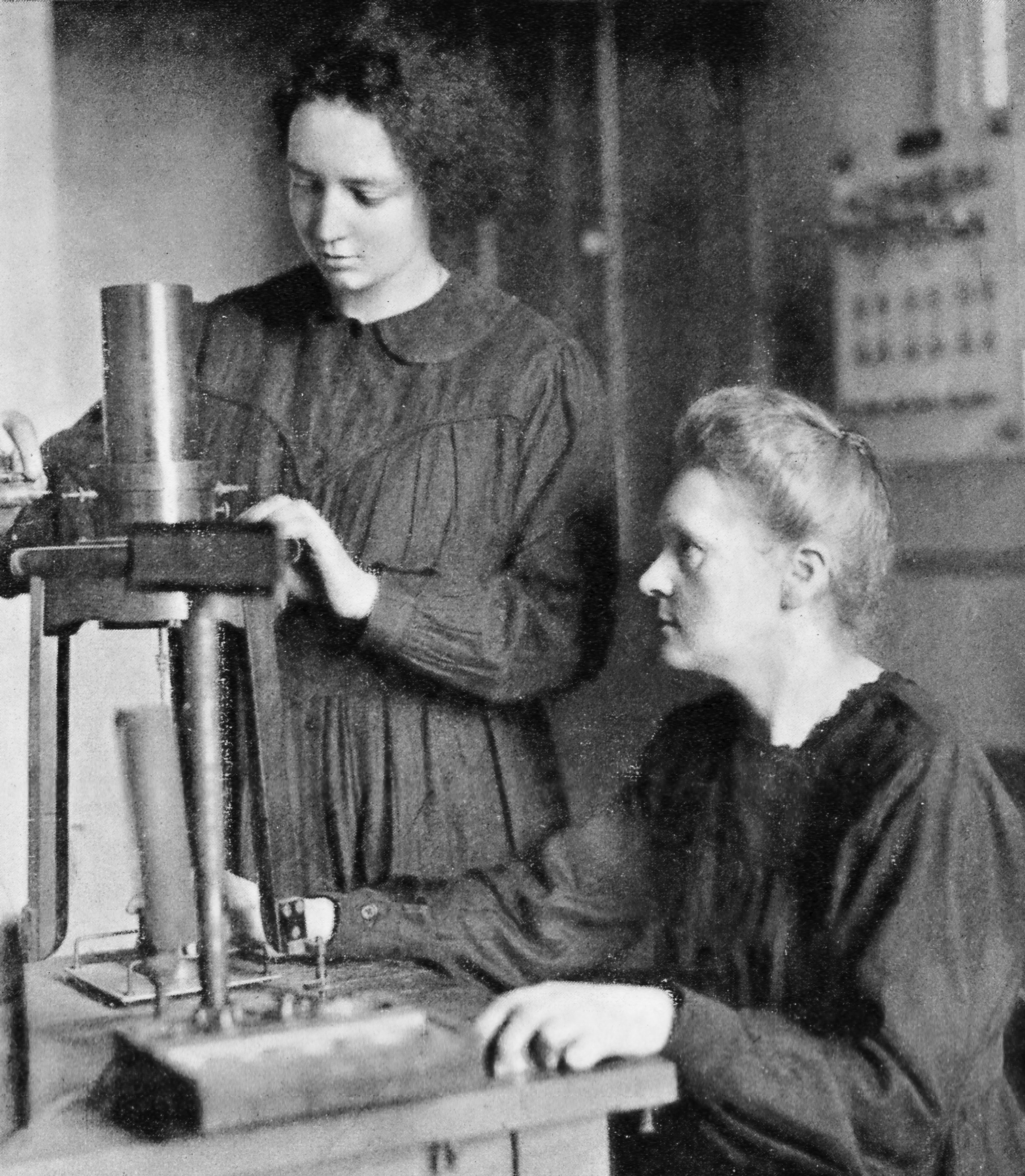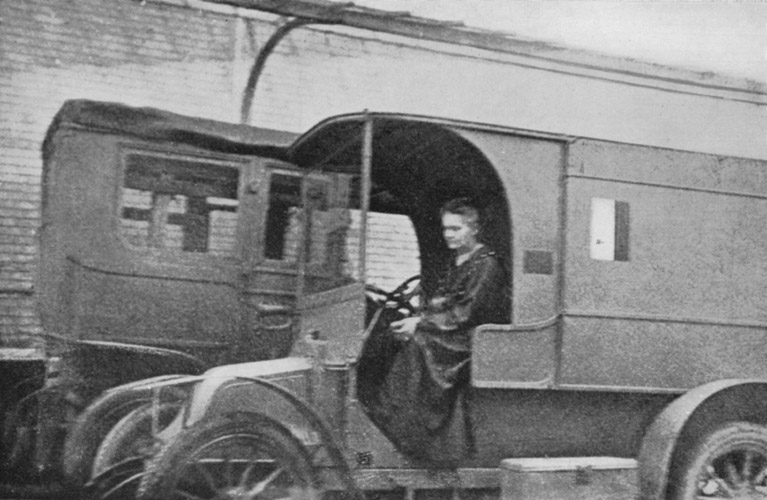Marie Skłodowska Curie (1867-1934) was a Polish-French chemist and physicist. One of the most influential female scientist of all time, she and her husband Pierre Curie were pioneers in the field of radioactivity. She was the first woman to be awarded the Nobel prize, in 1903 for physics and in 1911 for chemistry. In 1906, she became the first female professor at the Sorbonne, the university of Paris.
Though medical radiology was still in its infancy at the outbreak of the First World War, Marie Curie already saw its potential. Using X-rays to make bullets and pieces of shrapnel visible in the body of the wounded, the radiologist was able to assist the surgeon during operations, increasing their success rate.

Irène and Marie Curie in 1925. Irène won the Nobel prize for Chemistry in 1935
In November 1914, Curie first went to the French and Belgian fronts. Her seventeen-year-old daughter Irène accompanied her after completing a crash course in nursing. Mother and daughter examined hundreds of patients in hospitals behind the Yser Front. Marie Curie spent several weeks in Belgium in August 1915, in Poperinge and De Panne among other places, and Irène was put in charge of the X-ray department in the Belgian Field Hospital in Hoogstade, a large British-Belgian front hospital.
Marie and Irène installed X-ray machines in the front hospitals and trained doctors and nurses to use them. They also raised money to pay for the expensive machines. They had plenty of good arguments to convince sponsors, as radiology was saving dozens of lives.
Besides the over 200 stationary machines, Curie managed to procure about twenty smaller, portable devices, the Petites Curies. Placed in the delivery vans that supplied the field hospitals at the front, they made it possible for doctors to treat their patients on the spot. Marie Curie herself drove one of these delivery vans. During the war, three ‘little Curies’ were in active use in Belgium.


